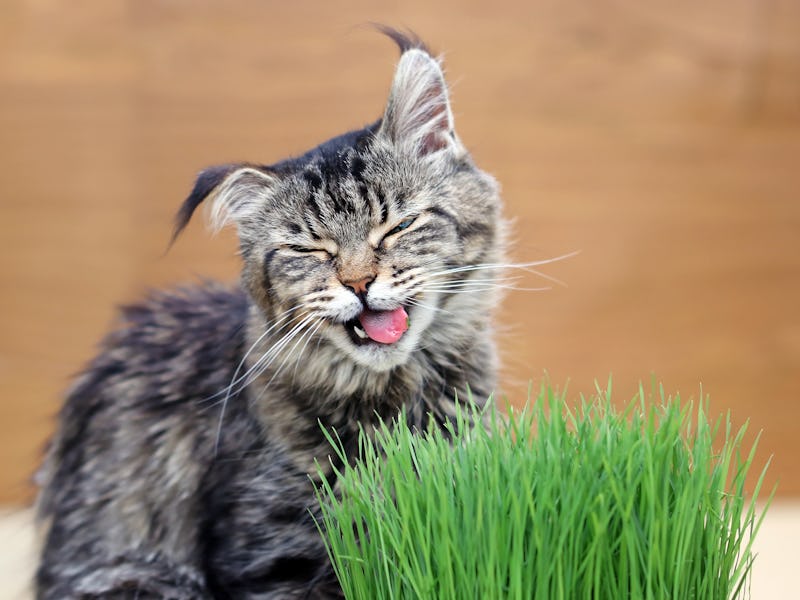The science behind catnip’s potent powers, explained
This trick of evolution will blow your mind.

Catnip has such an intoxicating effect on felines it might as well be a drug — even though it isn't, technically.
For a long time, we haven't properly understood why cats are so drawn to catnip, also known as catmint (Nepeta cataria). But whether it makes your cat seemingly bombed, go haywire, or just fully pass out, every cat owner knows this herb can have some serious affects on our feline companions, altering their behavior and personalities.
A study published earlier this year in Science Advances finally provides an answer as to why catnip has such powerful affects: The plant's powers are thanks to an evolutionary trick that puts cats into a tizzy whenever they sniff this innocent-looking form of mint.
INVERSE IS COUNTING DOWN THE 20 STORIES THAT MADE US SAY 'WTF' IN 2020. THIS IS NUMBER 2. SEE THE FULL LIST HERE.
A cat pounces on catnip on Christmas.
Catnip's pungent odor comes from a chemical called nepetalactone. It helps the plant repel insects.
But this research takes us further into the evolution of nepetalactone using genetic analysis. According to study co-author Benjamin Lichman, a plant biologist at the University of York, his team discovered "a suite of unusual enzymes" were responsible for nepetalactone's kitty arousing properties.
"These enzymes are not found in any related plant species and have evolved uniquely in catmint," Lichman says.
Nepetalactone uses a double-whammy — literally — to stupefy cats. Lichman and his colleagues discovered that while other types of mint form chemicals using only one enzyme, nepetalactone instead activates one enzyme, which sets off a chain reaction to activate a second enzyme.
This double whammy gives nepetalactone its potent powers, the study suggests, but it's not the only unique thing about the chemical.
Catnip is in the family of Lamiaceae. Cats have intense attraction towards this plant hence the name catnip, catswort and catmint
In the same study, scientists found nepetalactone genes cluster closely together in the catmint genome. This clustering effect helped the researchers figure out what makes nepetalactone so potent.
There's more: it turns out catnip's strong scent targets certain receptors, activating the same neural pathways sexual pheromones use in cats' brains.
So, yes, catnip serves as a literal aphrodisiac for your cat.
But catnip isn't the only plant that can send your cat into a blissful stupor. A whiff of spider plant can induce something akin to a hallucinogenic state in Mr. Whiskers, too.
Evolutionarily speaking, catnip is interesting, because it also confuses insects that eat the mint plant. So the chemical odors serve as an evolutionary defense mechanism to protect the catmint from insect threats.
“We think that by producing these volatile compounds, the plant ‘confuses’ insects,” Lichman previously told Inverse, "which prevents them from landing on the plant and eating it.”
INVERSE IS COUNTING DOWN THE 20 STORIES THAT MADE US SAY 'WTF' IN 2020. THIS IS NUMBER 2. READ THE ORIGINAL STORY HERE.
This article was originally published on